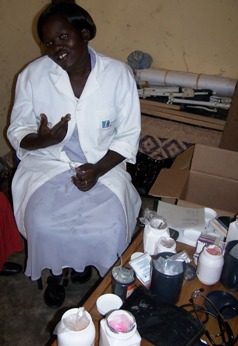
The news that people living wtih HIV who are on antiretoviral therapy will have a huge effect on HIV programming for sex workers. It suggests that ARV therapy rather than condom promotion may account for the huge reduction in HIV transmissions during commercial sex over recent years. It also raises the question of whether voluntary testing should be replaced by routine testing. What it definitely raises is the importance of free access to ARVs, nutrition and adherence support for all.
Thursday, 12 May 2011, 11 am EST
By Matthew Kavanagh
Washington, DC – Men and women infected with HIV reduced the risk of transmitting the virus to their sexual partners through initiation of oral antiretroviral therapy (ART), according to findings from a large multinational clinical study conducted by the HIV Prevention Trials Network (HPTN), a global partnership dedicated to reducing the transmission of HIV through cutting-edge biomedical, behavioral, and structural interventions.
The study concluded that initiation of ART by HIV-infected individuals substantially protected their HIV-uninfected sexual partners from acquiring HIV infection, with a 96 percent reduction in risk of HIV transmission. HPTN 052 is the first randomized clinical trial to show that treating an HIV-infected individual with ART can reduce the risk of sexual transmission of HIV to an uninfected partner.
This is the first randomized clinical trial to definitively indicate that an HIV-infected individual can reduce sexual transmission of HIV to an uninfected partner by beginning antiretroviral therapy sooner. HPTN recognizes the significant contribution that this study’s participants have made to furthering the progress in HIV treatment and prevention. “This rigorously conducted clinical trial demonstrates that ART dramatically reduces HIV transmission from an infected partner to an uninfected spouse or partner,” states Sten Vermund, HPTN Principal Investigator and Amos Christie Chair of Global Health at the Vanderbilt University School of Medicine. “Earlier therapy is a superior option that benefits both an infected individual and his or her uninfected partner and we support global efforts to offer ART to everyone who needs it.”
Among the 877 couples in the delayed ART group, 27 HIV transmissions occurred. This was in contrast to only one (1) transmission that occurred in the immediate ART group. This difference was highly statistically significant. The viruses transmitted in these 28 cases were confirmed to be linked by genetic analysis, confirming that the source of the new infection was the previously HIV-infected partner.
In the originally HIV-infected individuals themselves, 17 cases of extrapulmonary tuberculosis occurred in the delayed ART group, compared with three (3) cases in the immediate ART group, also a statistically significant finding. There were also 23 deaths during the study. Thirteen (13) occurred in the delayed ART group and 10 in the immediate ART group. Study participants and investigators are being informed of the results, and HIV-infected participants in the delayed ART group will be offered ART. All study participants will continue to be followed for at least one more year.
“Previous data about the potential value of antiretrovirals in making HIV-infected individuals less infectious to their sexual partners came largely from observational and epidemiological studies,” said NIAID Director Anthony S. Fauci, M.D. “This new finding convincingly demonstrates that treating the infected individual — and doing so sooner rather than later — can have a major impact on reducing HIV transmission.”

